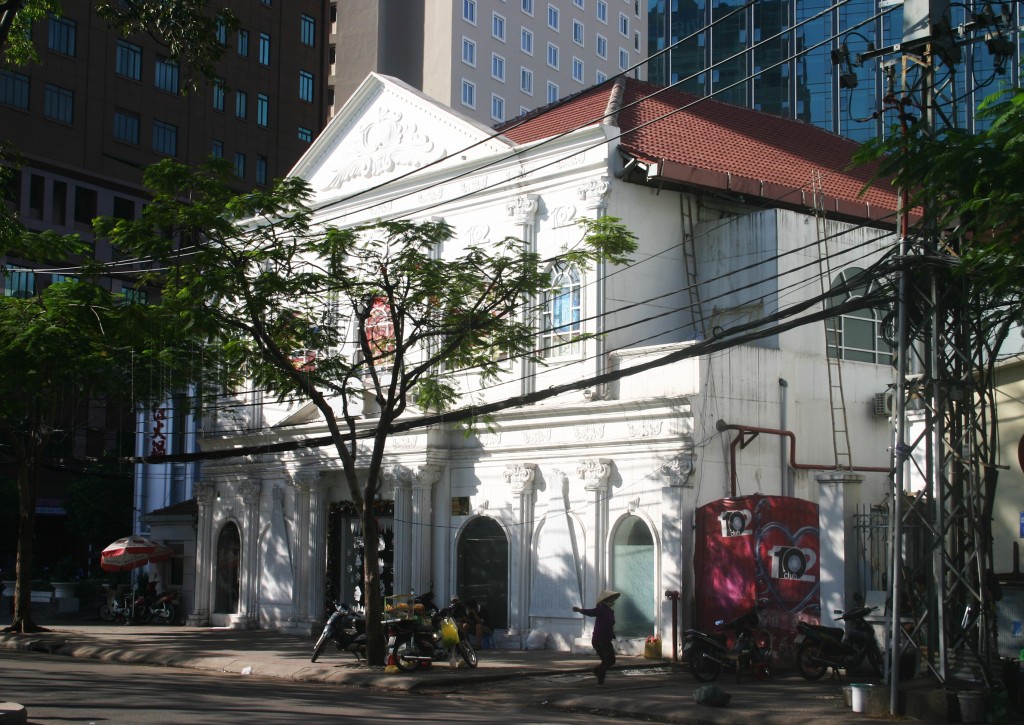
This article was published previously in Saigoneer http://saigoneer.com/
Over the years, Mê Linh square – known immediately after the French arrived as the Rond-point and later as place Rigault de Genouilly – has lost many of its old buildings, including the imposing Commissariat de Police for the 1st Arrondissement, which once stood on the site of today’s Renaissance Riverside Hotel Saigon.

The Chambre de commerce de Saïgon building on place Rigault de Genouilly in the 1880s
However, one important colonial edifice has survived to this day. The unassuming white villa at 11 Mê Linh, currently a restaurant, is one of the oldest surviving colonial buildings in the city, constructed in 1867-1868 to house the Chambre de commerce de Saïgon.
When it was first set up on 3 November 1867, the Chambre was found temporary accommodation in the compound of the Direction de l’Intérieur, now the Hồ Chí Minh City Department of Information and Communications at 59-61 Lý Tự Trọng, but on 30 September 1868 it moved into this building, where it would remain for 60 years.

The Chambre de commerce de Saïgon building in 1904
After March 1928, when the Chambre de commerce was given a larger and more imposing seat next to the Bến Nghé Creek in the heart of the city’s wealthy financial district (the building which later became the South Vietnamese Senate House and now serves as the Hồ Chí Minh City Stock Exchange, see Second Chambre de Commerce building), the old Chambre headquarters became home to a variety of companies, including the Plantations Indochinoises de Thé and the Société des Sucreries et Raffineries de l’Indochine.

The former Chambre de commerce building in the 1960s
Since 1954 the building would appear to have been used mainly as a bank and until quite recently it was still the main Hồ Chí Minh City office of ANZ.
These days this old building seems to change hands all too frequently, and since it is not a listed monument, each change of ownership brings yet more modifications to the façade.
UPDATE: This building was demolished in late June 2016.
Tim Doling is the author of the guidebook Exploring Saigon-Chợ Lớn – Vanishing heritage of Hồ Chí Minh City (Nhà Xuất Bản Thế Giới, Hà Nội, 2019)
A full index of all Tim’s blog articles since November 2013 is now available here.
Join the Facebook group pages Saigon-Chợ Lớn Then & Now to see historic photographs juxtaposed with new ones taken in the same locations, and Đài Quan sát Di sản Sài Gòn – Saigon Heritage Observatory for up-to-date information on conservation issues in Saigon and Chợ Lớn.

